- Details
- Hits: 916
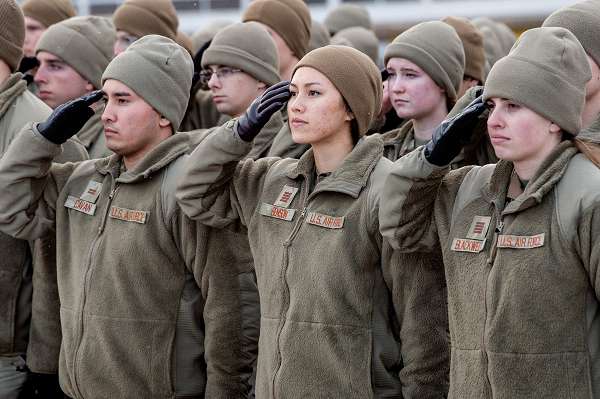
Colorado Springs, Colorado. (January 24, 2024): Practically everyone who has served in the armed forces has participated in a time-honored tradition, the Change of Command ceremony. In this photo by Rayna Grace, cadets salute during a Cadet Wing Change of Command ceremony transferring power from Cadet 1st Class Isaac Bates to Cadet 1st Class Abigail Worley at the Air Force Academy.
The ceremony ensures the continuity of command by marking the transfer of authority, responsibility, and accountability from one commanding officer to another. There is normally a passing of colors, or unit standards, from the outgoing commander to the incoming one which ensures that the unit is never without leadership. The military often includes such symbolism as aircraft flyovers, a ceremonial review of the troops, gun salutes, and military bands in the ceremony.
The Change of Command ceremony lets these cadets know they will never be leaderless during their career as Air Force officers.
- Details
- Hits: 2223
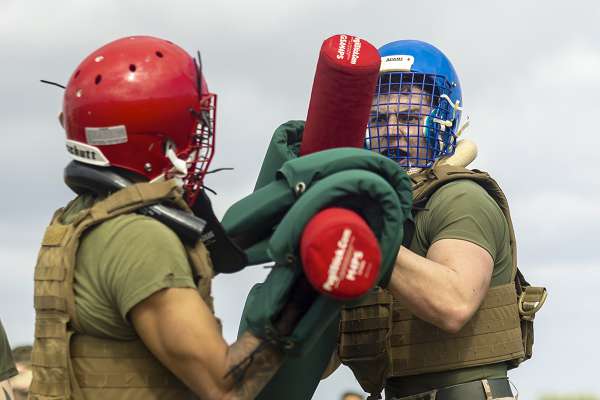
Futenma, Japan. (January 19, 2024): Whether it is a fight at school or in sports like boxing, you always remember your first taste of close quarter combat. In this photo by Lance Corporal Sav Ford, Marines participate in a pugil stick battle during a field competition. These pugil stick battles have become a rite of passage for Marines and Soldiers undergoing basic combat training.
The word is… the troops look forward to them.
The goal of the pugil stick is to simulate close combat in battlefield situations while maintaining a controlled, safe environment for safety. The weapon is designed like a rifle and bayonet, one end is usually designated as the butt end while another simulates the bayonet. This heavily padded pole-like training weapon has been used since the early 1940s by military personnel training for rifle and bayonet combat.
While many feel a bit apprehensive or fearful at first, these battles have become a tradition and a source of pride. Battling with pugil sticks tests both a recruit’s mind and body and even a less than perfect bout instills confidence.
The name "pugil stick" comes from the Latin pugnus (fist) which is also the term used for boxing (pugilist) and the word "pugnacious" (eager to fight). The bouts are full contact with recruits wearing protective gear such as football helmets, hockey gloves, and chest and shin guards. Much like traditional martial arts, the techniques involve deflecting the blow of an attacker and countering with a downward strike, simulating a "bayonet". Likewise, students are taught to use a straight jab, usually with the butt end.
Perhaps the most significant aspect of this training is the mental development that the troops undergo. Most civilians are unprepared for the life and death scenarios warfighters are likely to encounter in real combat. Pugil stick training motivates troops to develop the “warrior spirit,” toughness, and confidence they will need on the battlefield.
- Details
- Hits: 3599
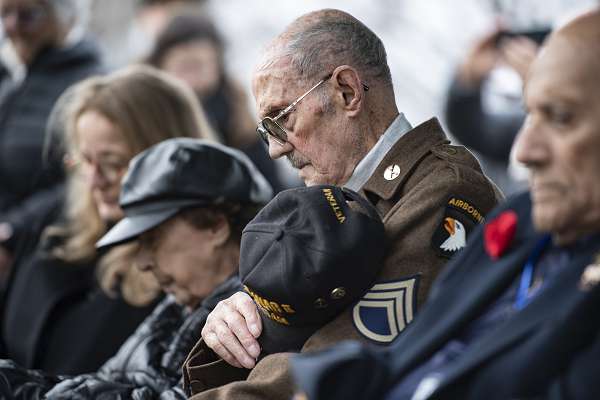

Arlington, Virginia. (January 25, 2024): Seventy-nine years ago, American troops were fighting for their lives in a winter hellscape called Bastogne in one of the bloodiest struggles in World War II, the Battle of the Bulge. In this photo by Elizabeth Fraser, Darrell Bush, 99, a former U.S. Army Staff Sergeant and a WWII veteran of the Battle of the Bulge, attends a ceremony commemorating the anniversary at Arlington National Cemetery.
The Battle of the Bulge, also known as the Ardennes Offensive, was a surprise winter German attack through the dense forests between Belgium and Luxembourg in December 1944. It was Hitler’s final desperate attempt to split the allies and capture the Belgian port of Antwerp. If successful, the Germans would be able to encircle and destroy the Allied armies. The Fuhrer hoped a victory would force the western Allies to negotiate a peace treaty in the Axis powers' favor.
What Hitler did not count on was the Screaming Eagles of the 101st Airborne Infantry Division.
Surrounded by five German armored divisions at the tiny Belgian town of Bastogne, the 101st valiantly held off countless attacks long enough to blunt the German invasion. The troops suffered through unimaginably harsh, wintry conditions in sub-zero temperatures and under relentless artillery fire.
- Details
- Hits: 1103
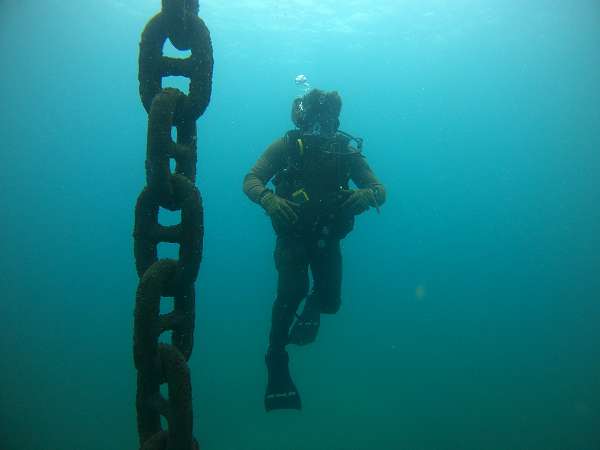
Sao Tome and Principe, West Africa. (January 21, 2023): “Travel to exotic places, meet interesting people” goes the famous 1970s recruiting pitch. No assignment fits that description better than assignment to the tiny nation of Aao Tome and Principe. In this photo by MC2 Andrew Waters, Hospital Corpsman 1st Class Nathaniel Yarbrough, assigned to Navy Underwater Construction Team 1, follows a buoy chain to surface during an underwater survey of a coast guard pier. These divers belong to the famous Seabees underwater construction units numbered 1 and 2 that were created in 1974. They specialize in both underwater construction and demolition and are in Sao Tome and Principe as part of the Navy’s Africa Partnership, a multinational strategic program to increase the professionalism of African militaries.
They do this by conducting joint exercises, port visits, hands-on practical courses, and community outreach with the coastal nations of Africa. Underwater Construction Team 1, comprised of seven officers and seventy-one enlisted, is assisting local coast guards to maintain their underwater facilities and teaching skills that enhance their ability to respond to mariners in distress.
- Details
- Hits: 1305
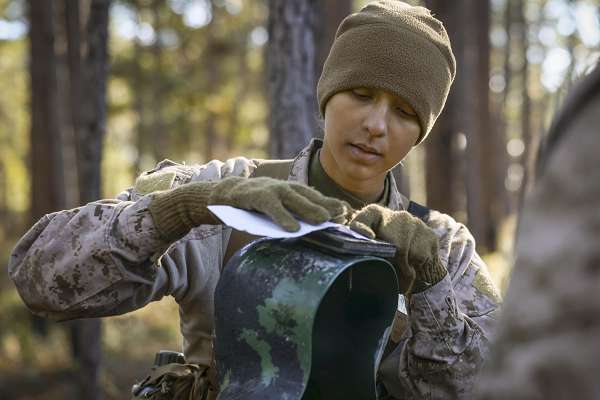
Parris Island, South Carolina. (January 17, 2024). In a previous life, I had the honor to serve as a Primary Leadership Development Instructor, short for the Army’s NCO academy, and my job was to train the next generation of combat leaders. An essential part of the curriculum is the science of map reading and land navigation that every student must master to pass. In this photo Marine Corps Lance Cpl. Ava Alegria, a recruit participates in a land navigation course using the “old fashioned” compass, protractor, and a pencil method.
Today’s young troops, so accustomed to digital technology to solve problems, often find using these unsophisticated methods a bore. Why not just use GPS and not rely on human calculations at all? My response was always, “What happens when the enemy knocks out the satellites?"
This is why the U.S. military continues to teach map reading in this elemental way to prospective infantry leaders. Every infantry leader must be able to identify their position and navigate to various objectives without any electronic assistance. Students begin by understanding how to identify a grid square and to locate a point within it. A grid square is a division of the earth represented on a map on a scale of 1:50,000 (each centimeter is equal to 500 meters on the ground). Locations within this square are referred to as grid coordinates.
Terrain features are displayed using contour lines that identify hills, ridges, valleys, saddles (two small hills sitting side-by-side), and depressions. The closer the contour lines are to one another, the steeper the terrain. The father apart the lines are indicates a flat, sloping terrain. They also learn the colors and symbols used to identify bodies of water or man-made structures like railways or roads.
- Details
- Hits: 6215
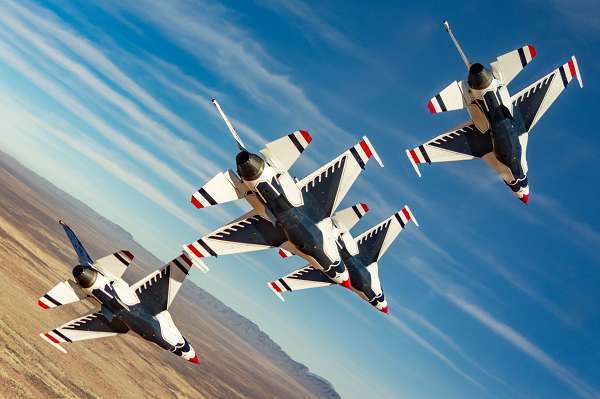
Spaceport, New Mexico. (January 17, 2024): It is one of the most spectacular demonstrations of aerial skill and daring in the world. In this photo by Staff Sergeant Breanna Klemm, the United States Air Force Air Demonstration Team “Thunderbirds” conduct winter training in preparation for another season entertaining audiences. The Thunderbirds were formed in 1953, just six years after the U.S. Air Force became its own branch of service, and they are the third-oldest formal flying aerobatic team in the world. Today’s Thunderbirds are assigned to the Air Force’s 57th Wing based at Nellis Air Force Base, Nevada.
The squadron's name is taken from the legendary creature that appears in the mythologies of several indigenous North American cultures. The Thunderbird, according to the Algonquian people’s mythology, rules the upper world while the Great Horned Serpent governs the underworld. The Thunderbird controls this ancient demon by firing thunderbolts to prevent it from overrunning the earth and devouring mankind. To these early American Indian tribes, the Thunderbird was literally a messenger from the Great Sun himself.
To become a Thunderbird, a pilot must undergo a rigorous selection process and must be nominated by at least two active Thunderbirds. Candidates must be experienced fighter pilots with a minimum of 750 hours in a fighter aircraft and must have demonstrated superior flying skills during their time in operational units. All candidates must have at least 3 years (but no more than 12 years) of military service and can expect to join the team for two years.


